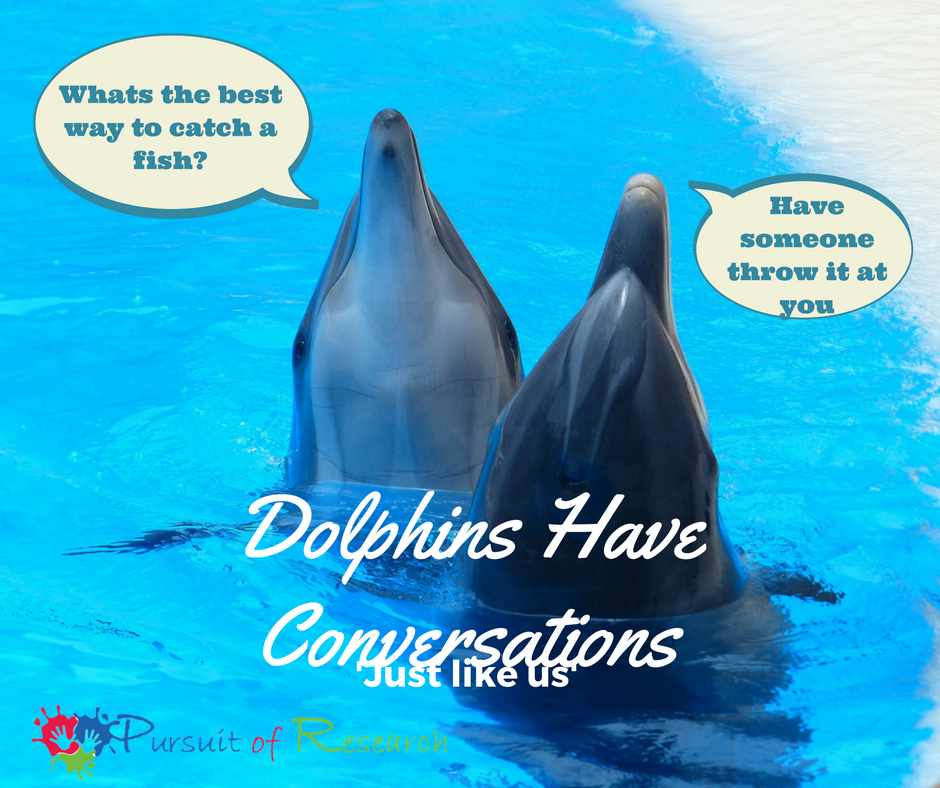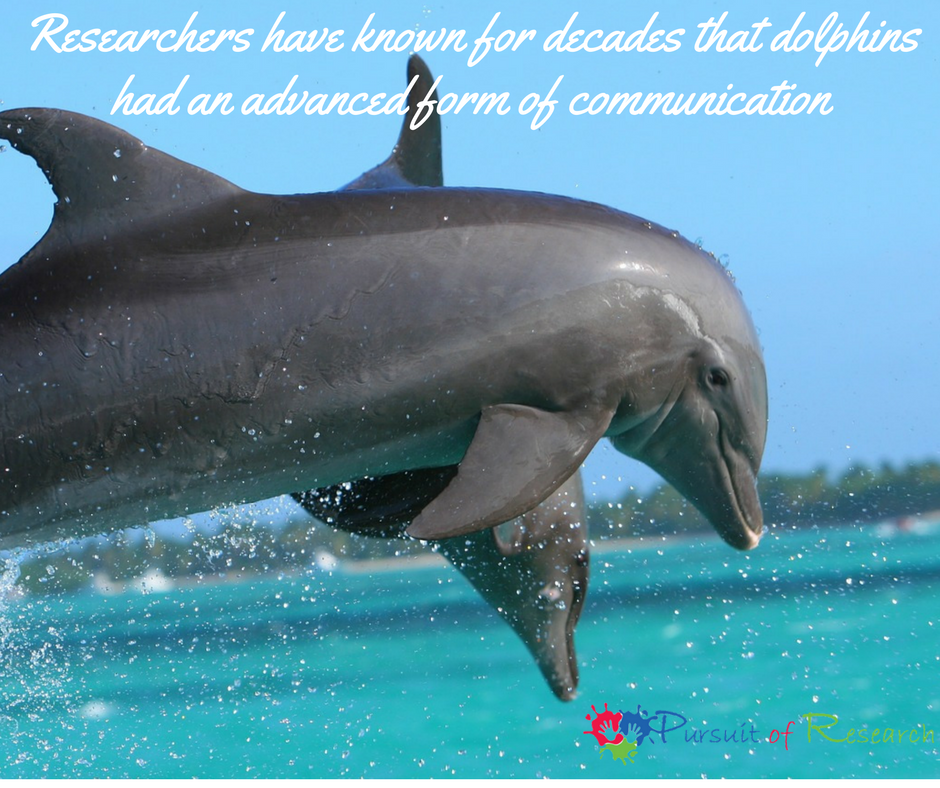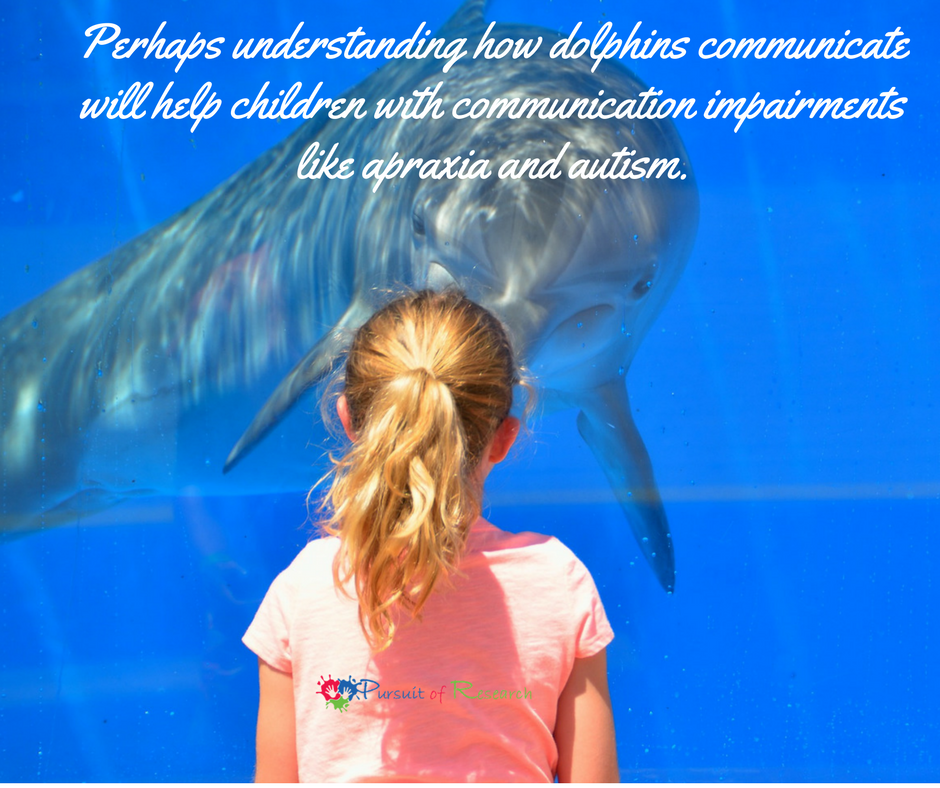“Humans must take the first step to establish relationships with the first intelligent inhabitants of the planet Earth by creating devices capable of overcoming the barriers that stand in the way of using languages and in the way of communications between dolphins and people,”~Dr Vyacheslav Ryabov

Have your children ever swam with dolphins? What about having a conversation with one?
Many of us in the special needs community have heard about swimming with dolphins. When my son Tanner who has apraxia was younger he went with his class to swim with dolphins here in Florida.
I am not saying that dolphins have a magical power to help children learn to talk, but it was an experience that he fully enjoyed as did all the other children.
There are a few places here in Florida that offer swimming with dolphins therapy such as Island Dolphin Care. Swimming with dolphins would be considered a complimentary therapy. Benefits reported by those that explore this therapy could be due to the fun, the water, the vestibular input from the activity, or just look at this as another form of animal assisted therapy. After trying it once for my son my view is if you can afford to do it, it’s certainly enjoyable to your child, can’t hurt and you may find it helps as others have. If you can’t afford it though don’t feel guilty, there is no evidence it’s going to be more effective than many other therapies.
I only hope the dolphins enjoyed it as much as my son and other children do that swim with them. I have always been fascinated with dolphins since I was little and saw Flipper
While working as a volunteer at the Central Park and Bronx Zoo during middle school one of my friends told me about her father who studied dolphin intelligence. I heard stories of how they will rescue someone drowning first and then come back for the stronger swimmers. Living in Florida on the water you frequently see wild dolphins swimming alongside your jet-ski or boat and get to know these beautiful, social and playful mammals. But how much do we really know about them?
Even though all agree dolphins are intelligent, after decades of research we still don’t fully understand how dolphins communicate or just how intelligent they really are. Perhaps this is due to the same reasons it’s difficult to test a communication impaired child, we need better testing for cognitive function for those that are essentially nonverbal (or who have their own language). I find it very exciting to see the evidence growing to establish there is a unique and highly advanced communication system between dolphins.
Scientists have recorded two dolphins having a conversation with each other for the first time after developing an underwater microphone which could distinguish the animals’ different “voices”.
Researchers have known for decades that dolphins had an advanced form of communication, using distinctive clicks and whistles to show they are excited, happy, stressed or separated from the group.

But scientists from the Karadag Nature Reserve, in Feodosia, Russia have now shown that dolphins alter the volume and frequency of pulsed clicks to form distinct “words”. which they string together into sentences in much the same way that humans speak.
Two adult Black Sea bottlenose dolphins named Yasha and Yana were observed talking to each other in a pool. They found that each dolphin “listened” to a sentence of pulses without interruption, before replying. The dolphins received no special training or any food rewards during the study. ““Essentially, this exchange resembles a conversation between two people.” said lead researcher Dr Vyacheslav Ryabov.
“Each pulse that is produced by dolphins is different from another by its appearance in the time domain and by the set of spectral components in the frequency domain. In this regard, we can assume that each pulse represents a phoneme or a word of the dolphin’s spoken language.
“The analysis of numerous pulses registered in our experiments showed that the dolphins took turns in producing [sentences] and did not interrupt each other, which gives reason to believe that each of the dolphins listened to the other’s pulses before producing its own.
“This language exhibits all the design features present in the human spoken language, this indicates a high level of intelligence and consciousness in dolphins, and their language can be ostensibly considered a highly developed spoken language, akin to the human language.
“This claim is supported by the fact that dolphins have possessed brains that are somewhat larger and more complex than human ones for more than 25 million years,” he added.
The researchers found that Yasha and Yana could create sentences of up to five “words”, but the scientists still do not understand the content.

Scientists already knew that dolphins use more than one thousand different types of whistle depending on social context but it was unclear if they could communicate directly with each other, one to one.
In 2007 Australian scientists identified specific whistles, which were interpreted to mean ‘I’m here, where is everyone’, ‘Hurry up’ and ‘There’s food over here’.
Dolphins are also thought to have developed a type of sign language in which they communicate with their flippers.
A group of scientists in Florida earlier this year showed that the communication between dolphins increases when they are undertaking a difficult task – in one case removing the lid from a canister – as if they were discussing the best solution.
Two dolphins show remarkable communication skills, clearly demonstrating that they have a highly functional language for the first time. (From NOVA scienceNOW S05E04, How Smart Are Animals?)
Dr Ryabov said it was now beyond doubt that dolphins speak their own language and it is time to start studying how to communicate directly with them.
“Humans must take the first step to establish relationships with the first intelligent inhabitants of the planet Earth by creating devices capable of overcoming the barriers that stand in the way of using languages and in the way of communications between dolphins and people,” he added.
The new research was published in the journal Mathematics and Physics.
Perhaps understanding how dolphins communicate will help children with communication impairments like apraxia and autism.

LISA GENG